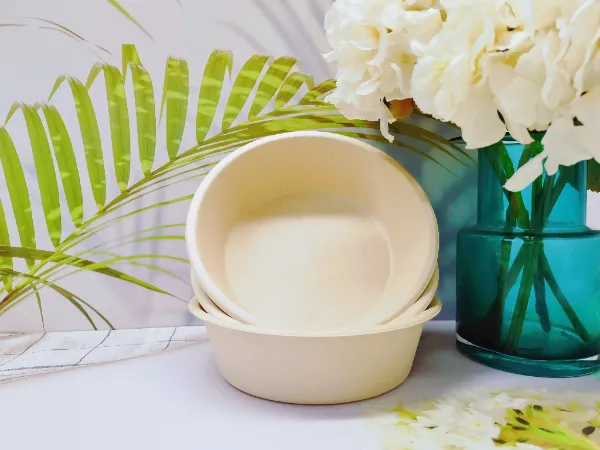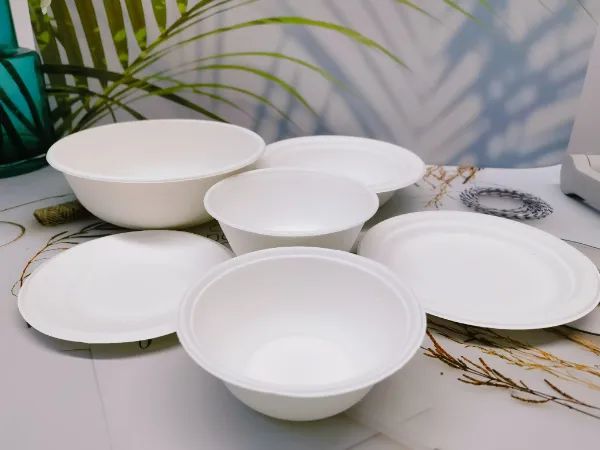- This topic is empty.
-
AuthorPosts
-
25/10/2024 at 17:22 #7269
As sustainability and environmental protection come to the forefront of consumer consciousness, biodegradable products made from one of nature' s most versatile resources provide a green alternative to traditional disposable tableware. In this blog post, G-COVE shares the manufacturing process behind our natural bamboo pulp biodegradable paper bowls.
The Manufacturing Process of Natural Bamboo Pulp Biodegradable Paper Bowls
Raw Material: Bamboo
Bamboo, a rapidly growing grass, is renowned for its strength, flexibility, and quick growth cycle. Requiring minimal pesticides and capable of thriving in various climates, bamboo is an ideal choice for sustainable manufacturing. The journey of a biodegradable paper bowl begins with the careful selection of mature bamboo stems, harvested in a manner that ensures the health and continued growth of the bamboo forest.
Bamboo Harvesting
The harvesting process is carefully managed to minimize environmental impact. Bamboo is typically cut at its base, allowing new shoots to sprout and continue the growth cycle. This process is often carried out manually, respecting the natural rhythm of bamboo growth.
Transportation and Preparation
Once harvested, the bamboo is transported to the manufacturing facility, where it undergoes a series of preparatory processes. The outer layer of the bamboo is removed, and the inner pith is cleaned to remove any impurities.

Pulping
The core step in the manufacturing process is pulping the bamboo. This involves breaking down the bamboo fibers into pulp using either mechanical or chemical processes. Mechanical pulping employs large grinders to physically break down the bamboo, while chemical pulping may use eco-friendly chemicals to soften the fibers.
Bleaching
After pulping, the bamboo pulp can be bleached or left unbleached, depending on the desired color and brightness of the final product. When bleaching is chosen, environmentally friendly agents are used. Some manufacturers opt for oxygen or hydrogen peroxide, both of which have minimal environmental impact.
Molding
The pulp is then mixed with water to create a slurry, which is poured into bowl-shaped molds. The design of the molds ensures that the final product has the correct dimensions and shape.

Drying and Forming
The molded bowls are then subjected to a drying process, which can be done through air drying or using specialized dryers. This step removes excess moisture and solidifies the bowl's shape. The bowls are carefully monitored to ensure even drying, preventing warping or cracking.
Quality Control
Each batch of biodegradable paper bowls undergoes rigorous quality control checks, including tests for strength, durability, and biodegradability. Bowls that do not meet the stringent quality standards are either discarded or repurposed.
Packaging
The finished bowls are then packaged using eco-friendly materials, which may include recycled cardboard boxes or biodegradable plastic. The packaging is designed to be minimal yet protective, ensuring that the bowls remain intact during transport and storage.
Distribution
These bowls are distributed to various outlets, including restaurants, cafes, and retail stores. They are marketed as a sustainable, eco-friendly alternative to traditional disposable tableware.
The Future of Biodegradable Paper Bowls
As awareness of environmental issues continues to grow, the demand for sustainable products like natural bamboo pulp biodegradable paper bowls is expected to rise. G-COVE is continually researching and developing new technologies to improve the production process, making it even more efficient and environmentally friendly.
Conclusion
The manufacturing process of natural bamboo pulp biodegradable paper bowls exemplifies how innovation and sustainability can combine to create products that are not only practical but also beneficial to the planet. By choosing these bowls, consumers are making a positive impact on the environment and supporting a more sustainable future.
https://www.g-cove.com/The-Sustainable-Journey-of-Natural-Bamboo-Pulp-Biodegradable-Paper-Bowls.html
http://www.g-cove.com
G-COVE -
AuthorPosts
- You must be logged in to reply to this topic.



